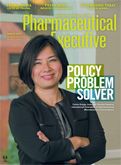- Sustainability
- DE&I
- Pandemic
- Finance
- Legal
- Technology
- Regulatory
- Global
- Pricing
- Strategy
- R&D/Clinical Trials
- Opinion
- Executive Roundtable
- Sales & Marketing
- Executive Profiles
- Leadership
- Market Access
- Patient Engagement
- Supply Chain
- Industry Trends
Beyond the Science: Commercial Implications From ASCO 2017
Four strategic takeaways from this year's that are important for pharma oncology leaders.
Most years, the key learnings from the Annual Society of Clinical Oncology (ASCO) Annual Meeting revolve around what attendees are there to discuss: the science. Reflecting on the 2017 meeting in June, the takeaways that come to mind include the breakthrough assets and combinations, the missed hypotheses, the discoveries and advancements that help us get to a deeper genetic understanding of cancer-this great killer-and, lately, the financial implications of these advancements.
This year-after five solid days of walking more than 20,000 steps navigating Chicago’s McCormick Place and absorbing volumes of data during each session-we definitely saw some impressive clinical advancements. However, stepping back, we think that the real story from ASCO 2017 lies in the downstream implications that science holds for companies looking to establish or sustain leadership in oncology. The following are our top four takeaways for oncology commercial leaders.
1. Become masters of selectivity
“Right patient, right drug, right time.” While advancements have led to an increasingly prominent theme of personalization and targeting in recent years, ASCO placed greater emphasis on selectivity to optimize benefit at each line of therapy. In the age of personalized medicine, there’s an art and a science to answering, “Which patients will benefit?”
The oncology community is broadly asking this question after the varied outcomes for pembrolizumab vs. nivolumab (PD-1 inhibitors) in front-line, non-small-cell lung cancer patients. Patient selection is a clinical question, but it’s also a very important commercial question, and a foil to the traditional mindset of broader

patient population strategies. Companies need to accept focused patient types-like we saw this year with olaparib in BRCA-mutated, triple-negative breast cancer patients (the OlympiAD trial)-as core to the strategy, aligning expectations to lay a solid foundation of value on which to build.
The shift in mindset and capabilities that are needed to “go small to go big” aren’t trivial, but future leaders in oncology will master selectivity clinically and be okay with building beachheads from which to grow for commercial success.
2. Find your clinical and commercial differentiation
In many categories today, significant competition exists. The immunotherapy discussion around checkpoint inhibitors at ASCO, on and off the stage, gravitated to the question of whether there’s meaningful clinical differentiation among the assets. This sentiment also has been raised by large provider networks and payers. While current studies don’t allow for head-to-head comparisons, the challenge is compounded for anti-PD-1s/anti-PD-L1s when we look into the pipeline and see a large number of companies developing their own asset to be used in combination with another novel asset without having to partner.
If the checkpoint inhibitors are the “same” for customers, what can you do to win? Substitute CDK4/6, ALK+, etc., and the same question arises, although at a much different scale. Companies that will lead in oncology moving forward will ideally find differentiation in development and supplemental evidence, but they’ll need to invest heavily in commercial differentiation as well.
The findings from ZS’s 2017 Oncology Customer Experience Tracker study show that when healthcare providers have a positive experience with oncology companies-taking into account their reputation and their customers’ interactions with people and support services-oncologists prescribe the company’s products more, provide more access to sales reps, and have more affinity for non-personal interactions. As the care model changes and evolves, companies that will lead in oncology will be innovating and evolving their commercial deployment and emphasis on customer experience to provide differentiated partnerships.
3. Advance with the patient
Perhaps one of the most impressive pieces of data shared at ASCO was the Memorial Sloan Kettering study demonstrating a five-month improvement in overall survival for cancer patients who self-reported their side effects and symptoms online. Compared with patients not using the tool, self-reporters also had fewer emergency department visits and hospitalizations, and they stayed on chemotherapy longer. Dr. Ethan Basch, the study’s lead investigator, noted that these gains “are greater than the effect of many targeted drugs for metastatic cancers.”
So how do oncology manufacturers harness this patient power? Clinical researchers should be pushing forward with new instruments to capture patient-reported outcomes, delivering better results for cancer patients, and creating opportunities for differentiation in increasingly competitive markets. The fact that ASCO featured this as a plenary session further underscores the urgent need for timely, tailored, and collaborative support for patients-from healthcare providers and drug developers alike.
4. Innovate today to lead tomorrow
Some of the biggest news at ASCO came from some of the smallest companies, such as Loxo Oncology’s larotrectinib for rare, TRK-mutated tumors or Incyte’s epacadostat, an IDO inhibitor that enhanced immune responses in combination with pembrolizumab. With many emerging competitors like these, and increasing competitive pressure from traditional big pharma companies, it’s more important than ever to be proactively planning where and how oncology leaders can win.
Healthcare providers at ASCO are feeling the pressure, too, as they struggle to implement changes for mandatory quality reporting, alternative payment models, and new ways of delivering cancer care. For those practices taking the plunge into the oncology care model, for example, they’re committed to the belief that change today will prepare them better for improved cancer care tomorrow.
Oncology executives should take the same cue: The time to innovate is before you need it. Being competitive today doesn’t equate to leadership tomorrow. Investments today in clinical and commercial excellence are essential for oncology leadership in the future.


Maria Whitman (maria.whitman@zs.com) and Sharon Karlsberg (sharon.karlsberg@zs.com) are principals with ZS Associates

